Abstract
The physicochemical nature of the cell wall was determined in the fourth internode of three isogenic brittle mutants of barley (Hordeum vulgare L.) and corresponding nonbrittle strains. Cellulose contents of the brittle culms were 17.5 to 20.3% of those of corresponding nonbrittle strains. No major difference was found in lignin and noncellulose components (except glucose) between brittle and nonbrittle strains. Maximum bending stresses of brittle culms were 38.0 to 54.2% of those of corresponding nonbrittle strains. The degree of polymerization of cellulose, measured by viscometry, was similar between the brittle and the nonbrittle strains. Mole number of cellulose molecules in a unit length of brittle culms, calculated by dividing cellulose mass by molecular weight, was 7.7 to 17.3% of those of the nonbrittle strains. These results indicate that brittleness of mutant culms is due to fewer numbers of cellulose molecules in the cell walls.
Full text
PDF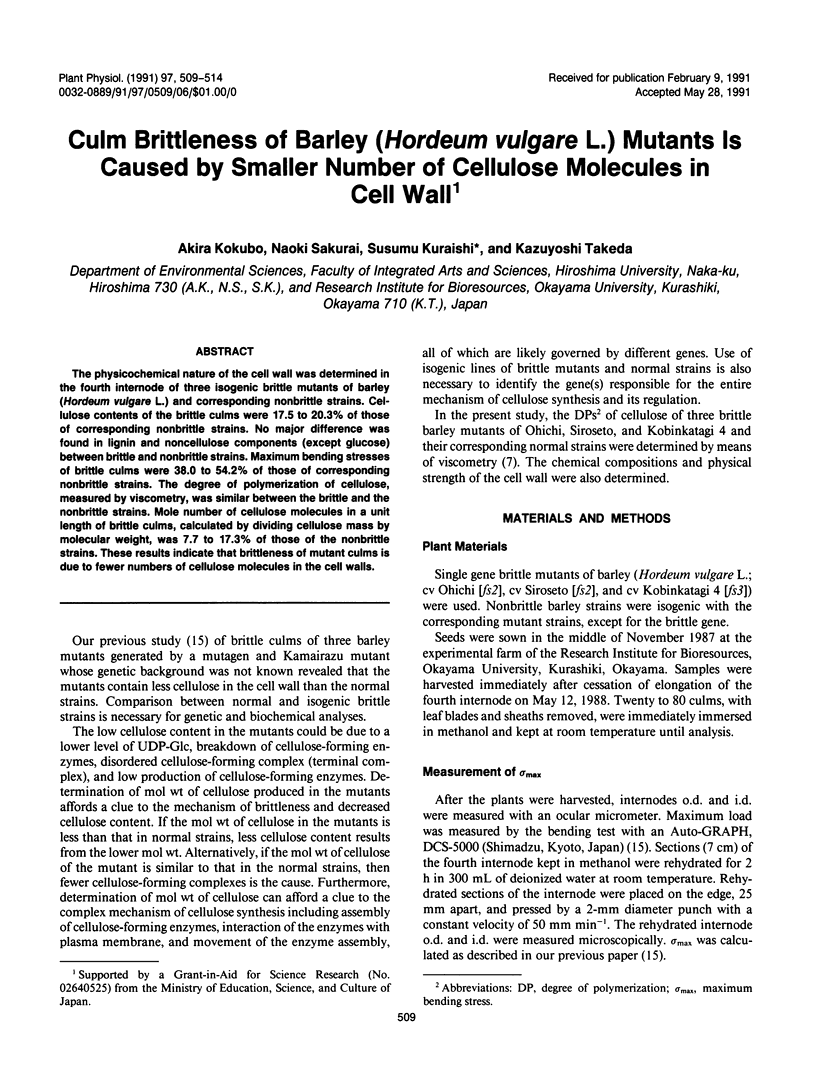
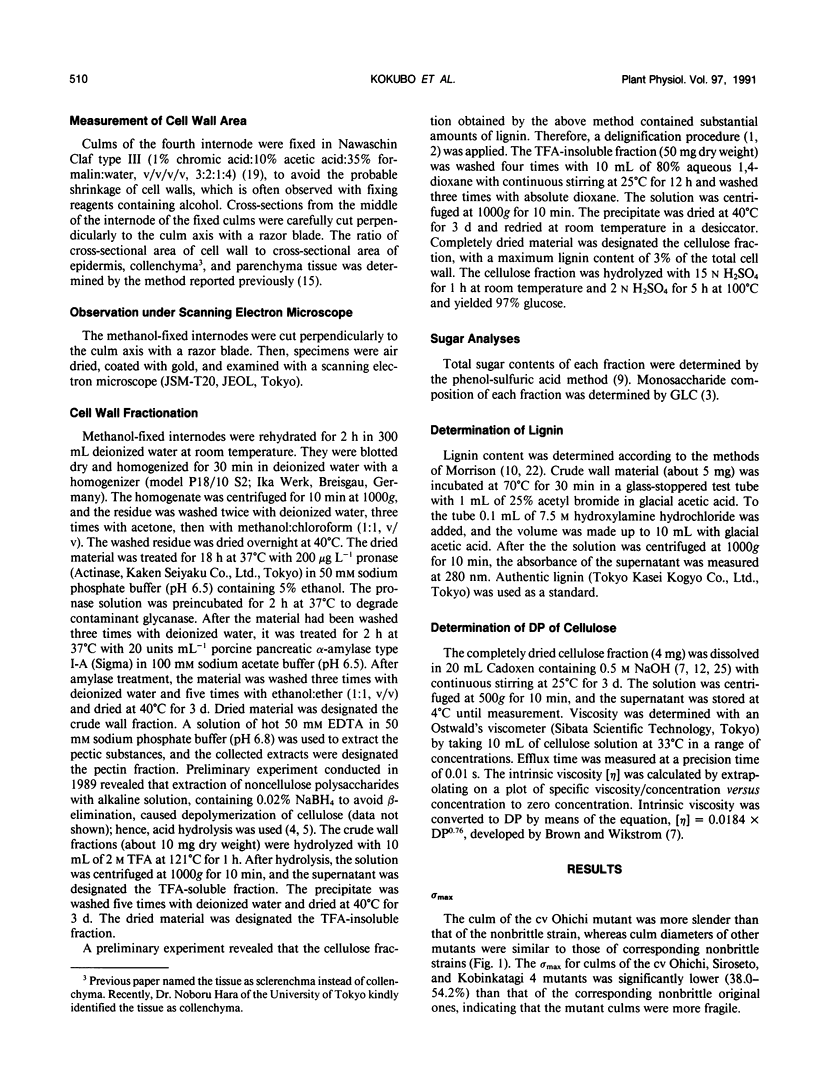
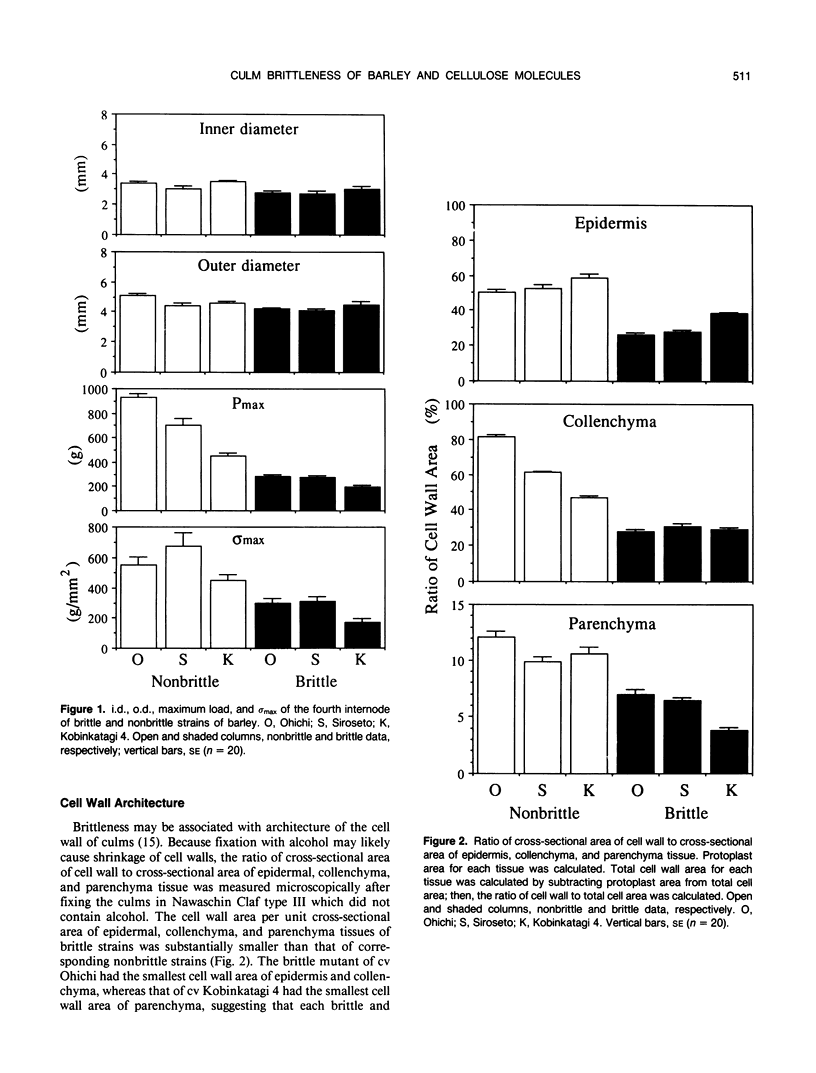
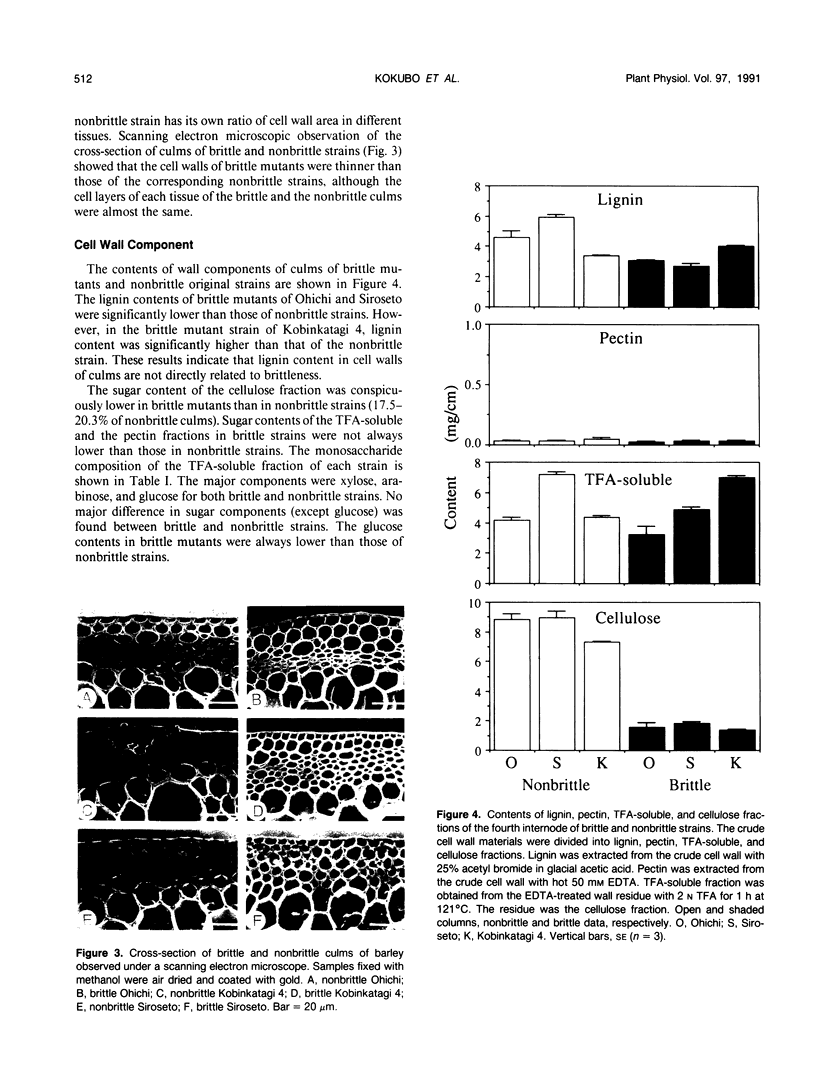
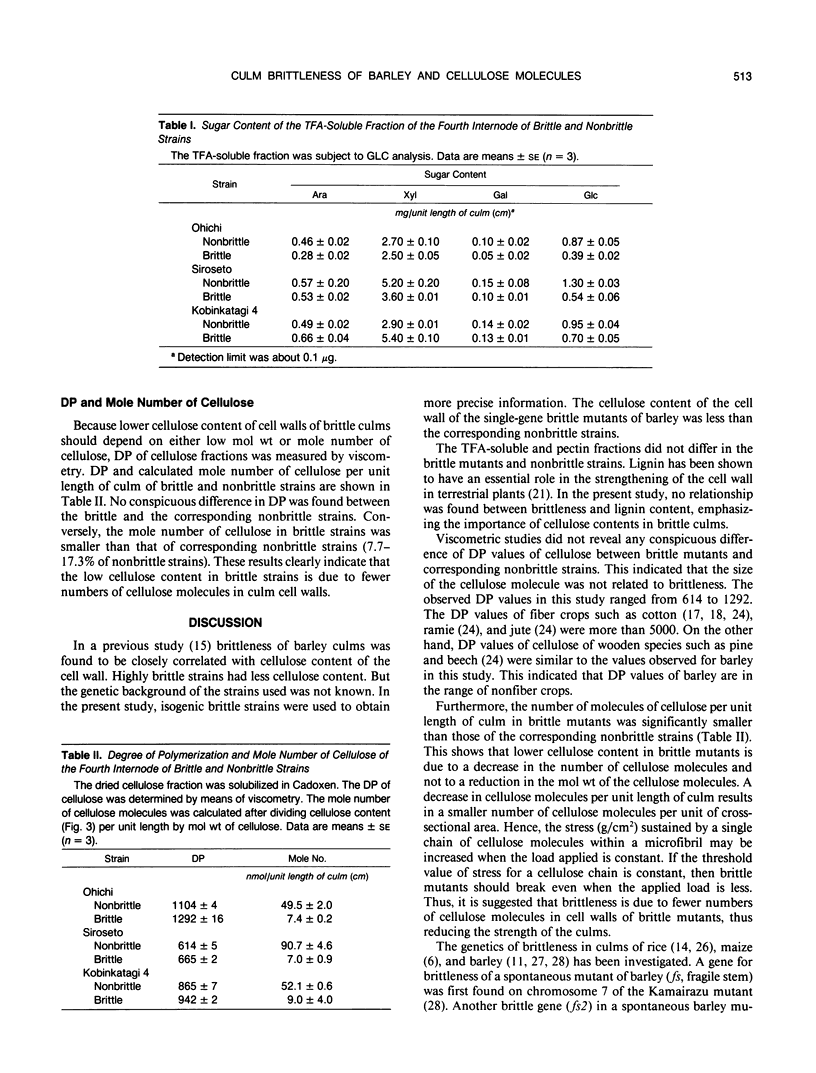
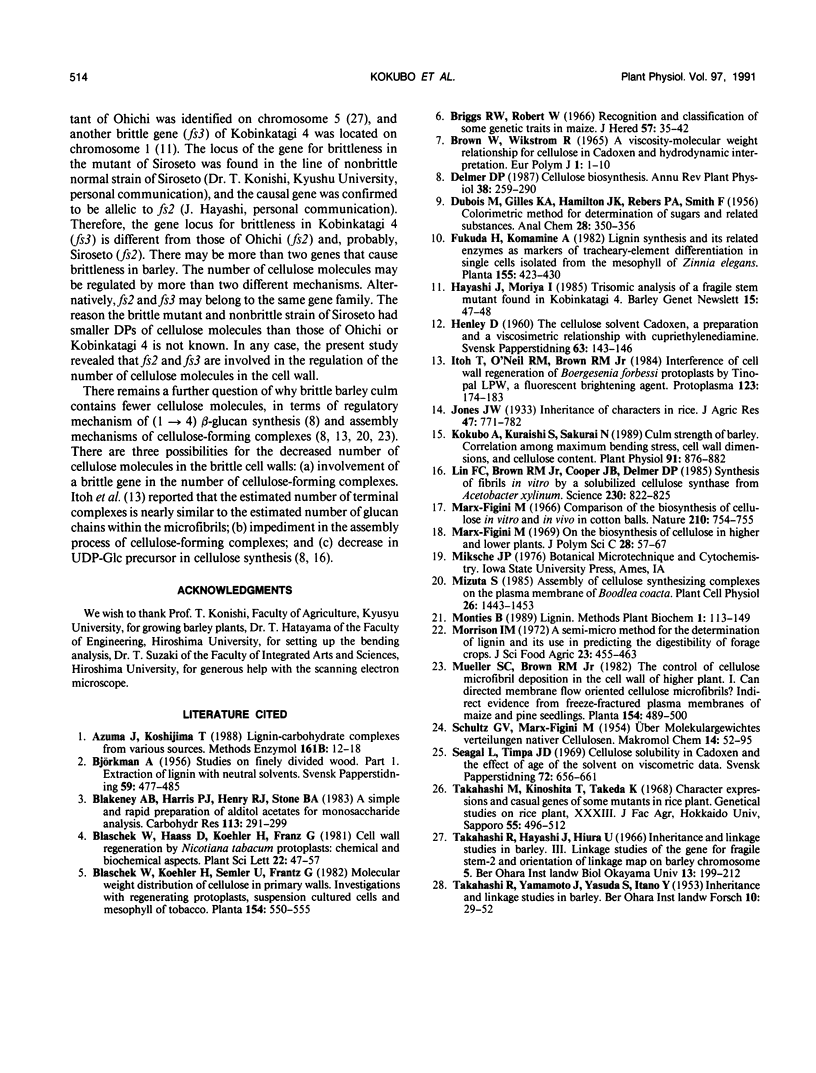
Images in this article
Selected References
These references are in PubMed. This may not be the complete list of references from this article.
- Kokubo A., Kuraishi S., Sakurai N. Culm strength of barley : correlation among maximum bending stress, cell wall dimensions, and cellulose content. Plant Physiol. 1989 Nov;91(3):876–882. doi: 10.1104/pp.91.3.876. [DOI] [PMC free article] [PubMed] [Google Scholar]
- Lin F. C., Brown R. M., Jr, Cooper J. B., Delmer D. P. Synthesis of Fibrils in Vitro by a Solubilized Cellulose Synthase from Acetobacter xylinum. Science. 1985 Nov 15;230(4727):822–825. doi: 10.1126/science.230.4727.822. [DOI] [PubMed] [Google Scholar]
- Morrison I. M. A semi-micro method for the determination of lignin and its use in predicting the digestibility of forage crops. J Sci Food Agric. 1972 Apr;23(4):455–463. doi: 10.1002/jsfa.2740230405. [DOI] [PubMed] [Google Scholar]



